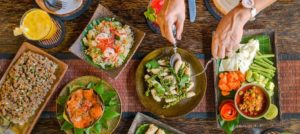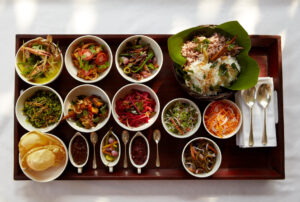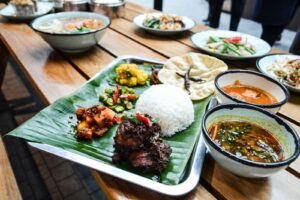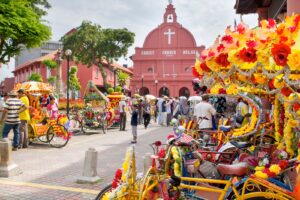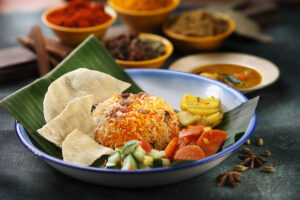The traditional cuisine of the Philippine Islands combines the tastes of the bountiful gifts of the fertile land and the underwater world of the tropical archipelago. The local culinary arts do not have the characteristic sharp notes of the East – the food in the Philippines is much “softer” than in neighboring countries. It is said to be a symbiosis of the moderation of the native islanders, the culinary imagination of the Chinese and Malays, the conservatism of the Spanish and the creativity of the local chefs.
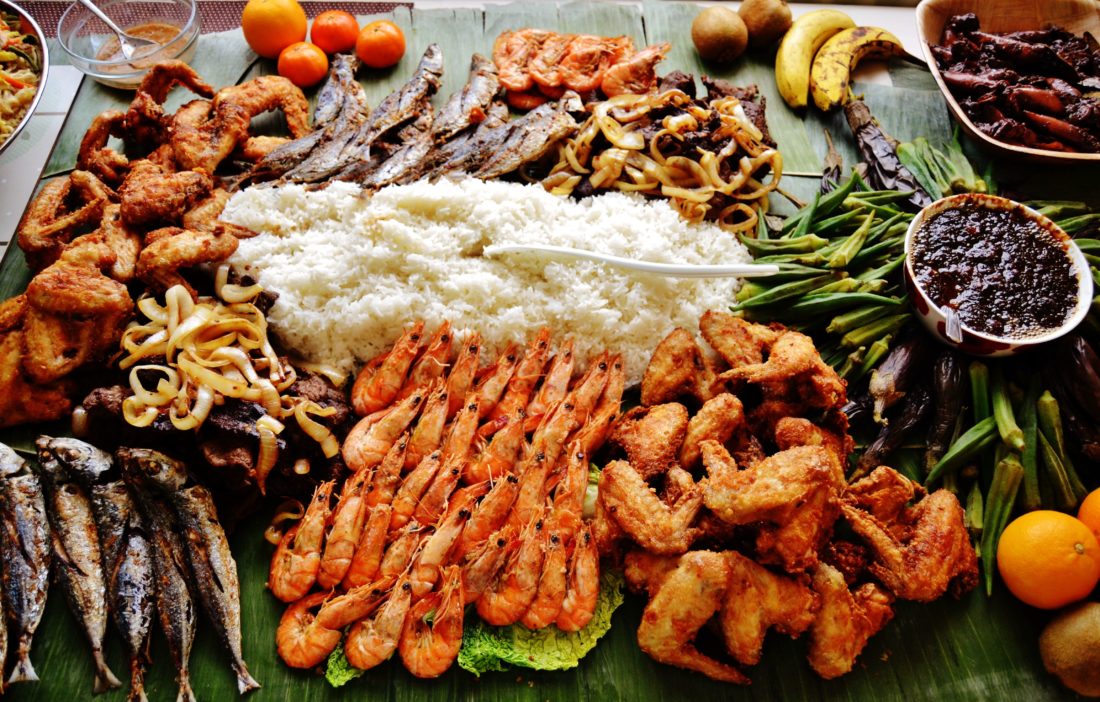
Everyday Food: What to Try First
Tourists should start tasting Filipino food with a traditional local breakfast. It includes fried rice, spicy sausages (longaniza) or fish with tomato and pati (fish sauce) seasoning. It is customary to start dinner here with sinigang, a broth based on meat, shellfish (bangus), shrimp, tamarind (a sweet and sour fruit), and vegetables.

Of the hot spices in the Philippines, hot chillies are the most common. Fried dishes here are also flavored with garlic and vinegar. At the table, locals habitually reach for a pitcher of pepper or soy sauce, which is mixed with kalamansi (small green lemons).
Street food in the Philippines
Street food in the Philippines is varied and colorful: many foods are deep-fried with turmeric, giving them a bright orange color. Street vendors offer white fish balls, mini kebabs of seafood, meat, boiled eggs (kvek kvek) served with a spicy vinegar sauce. Exotic snacks include balut (duck eggs), isav (fried chicken and pork intestines), tsitsaron (deep-fried pork skin). You can refresh yourself with a taho or gulaman saigo drink.

Traditional dishes of the Philippines
In restaurants and cafes, the national cuisine of the Philippines is represented by tinola (soup with chicken meat, papaya, spinach, ginger), pankitmolo (casserole of pork or chicken meat, mushrooms, served with broth). On the menu you can always find and adobo – delicious pieces of pork and chicken meat in a marinade of vinegar, garlic, spices (offered with rice and vegetables).

Traditional holiday dishes include lechon (suckling pig stuffed with tamarind leaves and char-grilled to a crispy crust). It is usually served with liver sauce. Another delicacy for the celebrations is sinanglai. It is a stuffed crab or fish wrapped in Chinese cabbage leaves and stewed in coconut milk.
Other popular Filipino dishes include lumpia, a salad of palm heart, pieces of pork and shrimp with garlic and soy sauce, and kare kare, a dish of oxtail, gristle and rennet stewed with vegetables in peanut sauce and served with spiced anchovies (bagoong).
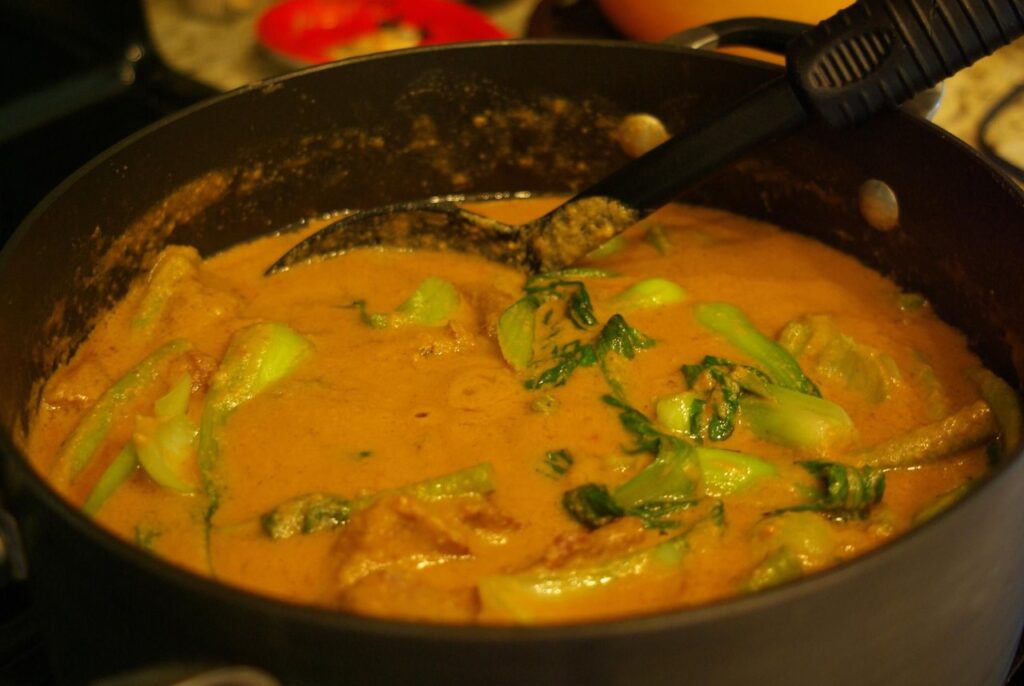
Desserts and alcohol on the islands
Among the sweet national dishes of the Philippines, puddings have an excellent taste. They are usually made with rice and coconut milk. One of the most famous types of this dessert is bibingka made from ground rice, sugar, and coconut milk, cooked in a clay oven. It is often served with fresh and salted duck eggs. Gwinathan, a coconut pudding with coconut cream, is also popular.
Ice cream in the Philippines is made by adding fruits: nangka (bread tree), ube, mango, as well as the more familiar to Europeans vanilla, chocolate, and strawberries.
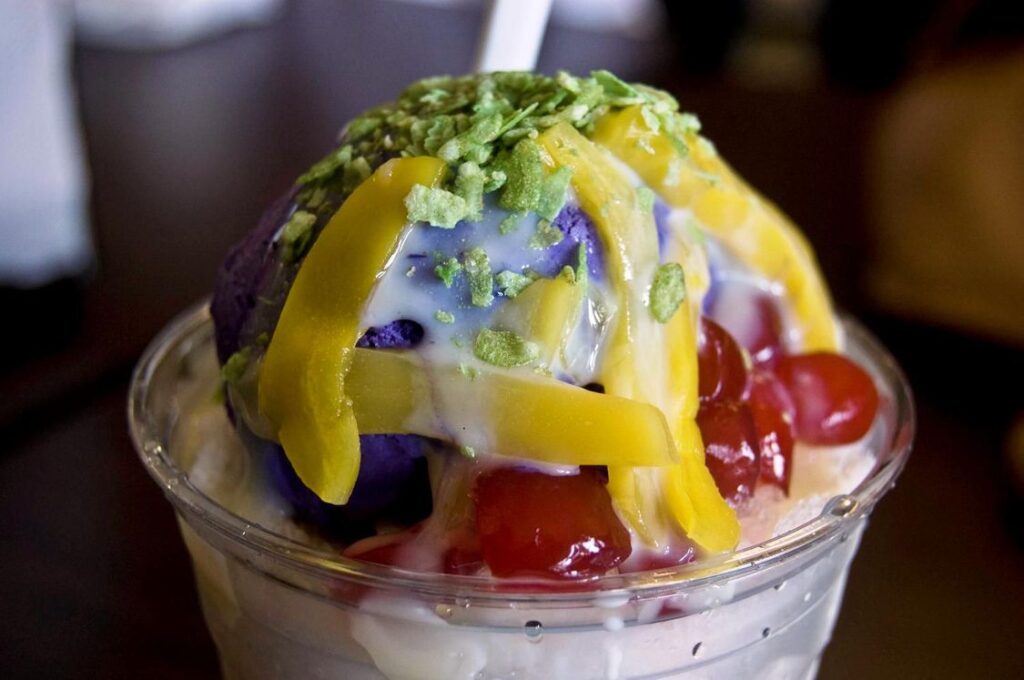
The islanders prefer lemonades, cold ginger tea (salabat), and strong baraco coffee. Local alcohol is represented by beer, rum, palm wine, hop drink based on fermented coconut milk.
Prices: How much does it cost to eat in the Philippines
Food prices in the Philippines vary. A snack on the street or at a budget café will cost from $1.50 to $3 per person. At mid-level culinary establishments – from $7 to $10 per person. You can have a meal for two in an expensive restaurant for $40-50 on average. In the fashionable establishments with gourmet seafood and expensive wines, dinner can cost $ 100-200 for two.


